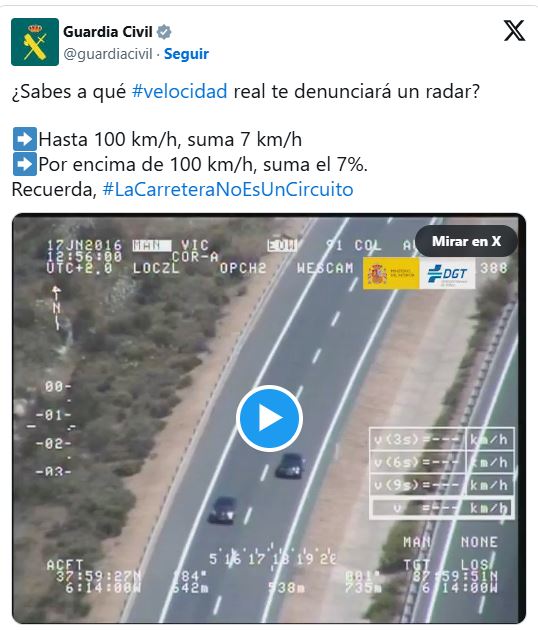
Best not to get caught speeding. Respect the signs avoids being stopped and fined | Photo: VicVa/ Shutterstock
Getting nabbed by a speed camera in Spain can sour your holiday or hit your wallet hard if you’re a resident. With 2,941 roadside radars—372 in Andalucia alone—Spain’s traffic enforcement is no joke, issuing over 217 fines daily at hotspots like the A-381 in Cadiz Whether you’re driving a rental or your own car, here’s the lowdown on dealing with that dreaded fine, dodging pitfalls, and maybe saving a few euros.
But before we dive into that, a great nugget of information is that by law, the radars allow for certain tolerance levels.
For example, the Guardia Civil has confirmed the “Rule of 7”, which essentially allows exceeding by 7 km/h on highways with speed limits of under 100km/h. And if the limit is greater than 100 km/h, it’s 7 per cent, so let’s say, on a 120 km/h motorway, you can go as fast as 128km/h no problem. If the speed limit is 50 km/h, you must not exceed 57 km/h or expect a fine. You may not exceed 34 km/h in urban or town areas if the sign has 30 encircled in red.

How to deal with fines
Step 1: Understand the Fine Spain’s speeding fines start at 100 euros for minor infractions up to 20 km/h over the limit and can climb to 600 euros for serious ones, like 30 km/h over.
Extreme cases—exceeding the limit by 60 km/h in cities or 80 km/h on highways—can turn criminal, risking prison, community service, or license suspension You’ll get a boletín de denuncia by mail, detailing the offense, fine amount, and a photo of your license plate as proof. Non-residents often face on-the-spot payment demands, and refusing can lead to your car being impounded.
Step 2: Check the Timeline. Fines must be paid within 60 days, but here’s the money-saver: pay within 20 calendar days, and you’ll get a 50% discount. A 100 fine drops to 50 euros, for example. If the fine arrives after 60 working days from the offence, it’s invalid, so check the dates. For rental cars, expect a delay since the rental company forwards your details to the authorities, often slapping on a 30-40-euro admin fee.
Step 3: Paying the Fine. You’ve got options to settle up:
- Online: Visit the Dirección General de Tráfico (DGT) website, mainly in Spanish. You’ll need the fine’s reference number and your passport or ID. Payment is by credit or debit card, and it’s secure, but can be tricky to navigate.
- In Person: Head to a post office with a giro postal (money order), select Santander bank branches, or your local traffic department. Cash is king at banks, as cards might not be accepted.
- By Phone: Call 060 to pay, though English support is spotty in Spain. Always keep the receipt. If you’re abroad, the EU Directive 2015/413 means Spain can chase you across borders, so don’t ignore it.
Step 4: Should You Appeal? Got grounds to fight? You have 20 days to appeal in writing via the DGT, but you’ll lose the 50 per cent discount if you do. Valid reasons include incorrect vehicle details or a fine issued too late. One driver on Tripadvisor reported a mistaken fine for a car rented a year prior, which was worth contesting. Appeals are a gamble, as the process is slow and mostly in Spanish.
Step 5: Avoid Future Fines Spain’s speed cameras—fixed, mobile, and even helicopter-mounted Pegasus units—allow a small buffer: 5-7 km/h or 5-7% over the limit, depending on the camera type.
Stick to limits (50 km/h urban, 90 km/h country roads, 120 km/h motorways) and watch for variable signs. Using radar detectors is illegal, with hefty fines, so turn off GPS camera alerts.
If renting, double-check speed limit signs, as sudden drops (90 km/h to 60 km/h on the A-384) catch tourists.
Final Tip: Pay fast to save cash, and drive smart to avoid the hassle altogether. Spain’s roads are unforgiving, but your bank account doesn’t have to be.

![Sunday is the last day to take advantage of the Chase refinance mortgage rate sale [Expired]](https://thenewsblend.com/wp-content/uploads/2025/12/eed000a0-caf6-11f0-baaf-499d9d48b516-768x512.jpg)




